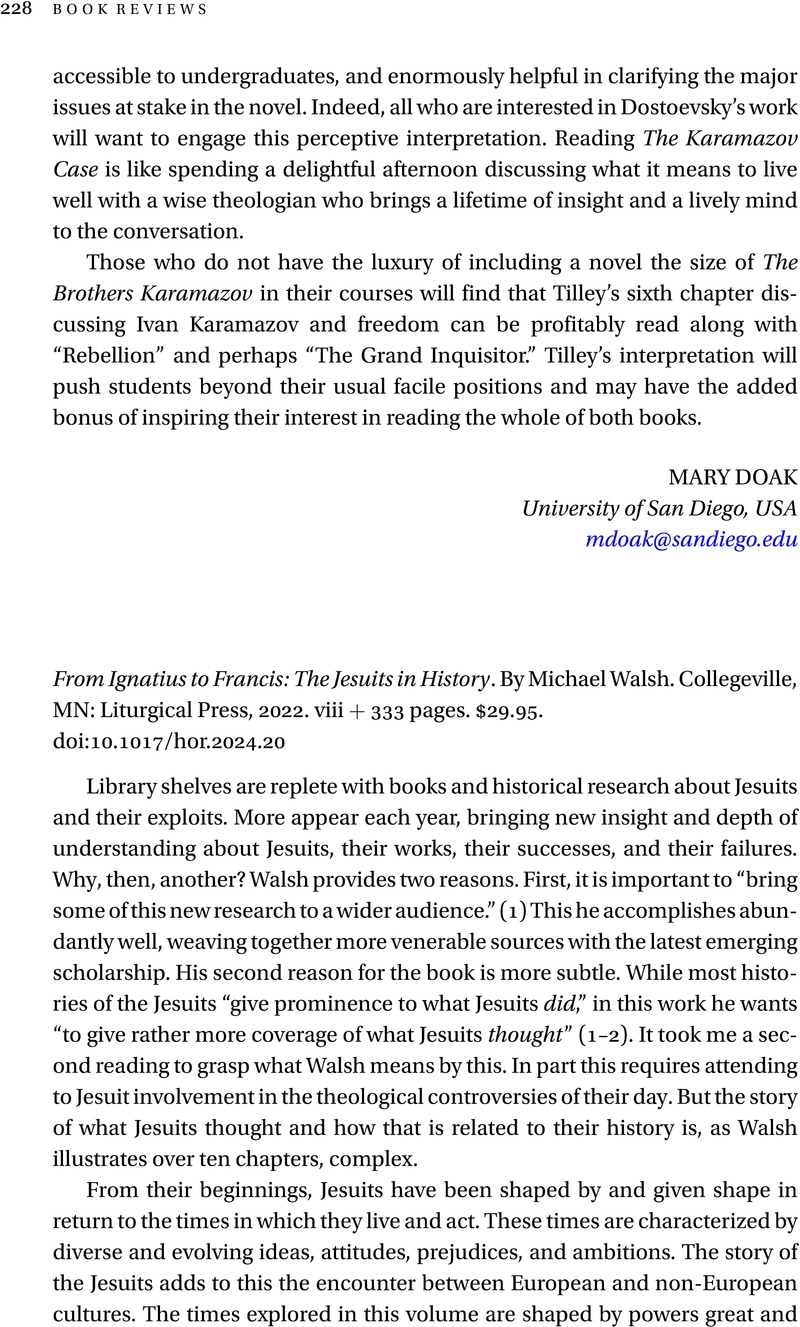No CrossRef data available.
From Ignatius to Francis: The Jesuits in History. By Michael Walsh. Collegeville, MN: Liturgical Press, 2022. viii + 333 pages. $29.95.
Review products
From Ignatius to Francis: The Jesuits in History. By Michael Walsh. Collegeville, MN: Liturgical Press, 2022. viii + 333 pages. $29.95.
Published online by Cambridge University Press: 29 May 2024
Abstract
An abstract is not available for this content so a preview has been provided. Please use the Get access link above for information on how to access this content.

- Type
- Book Review
- Information
- Copyright
- © College Theology Society 2024



